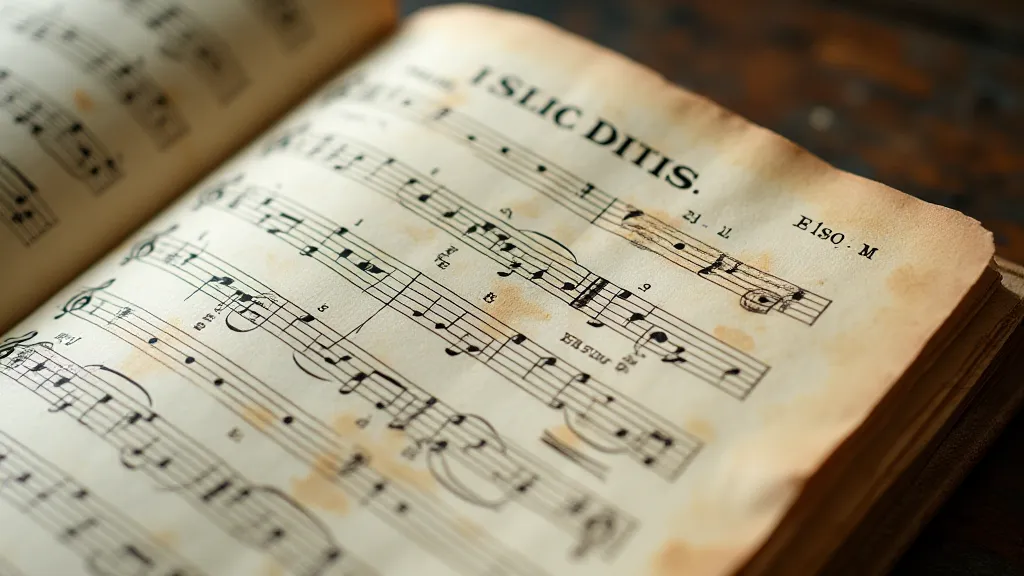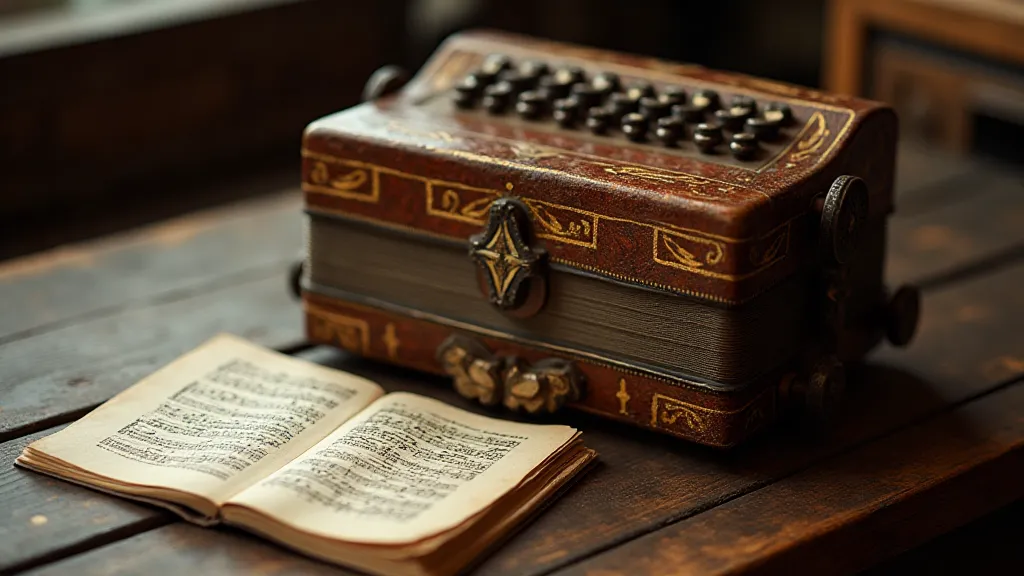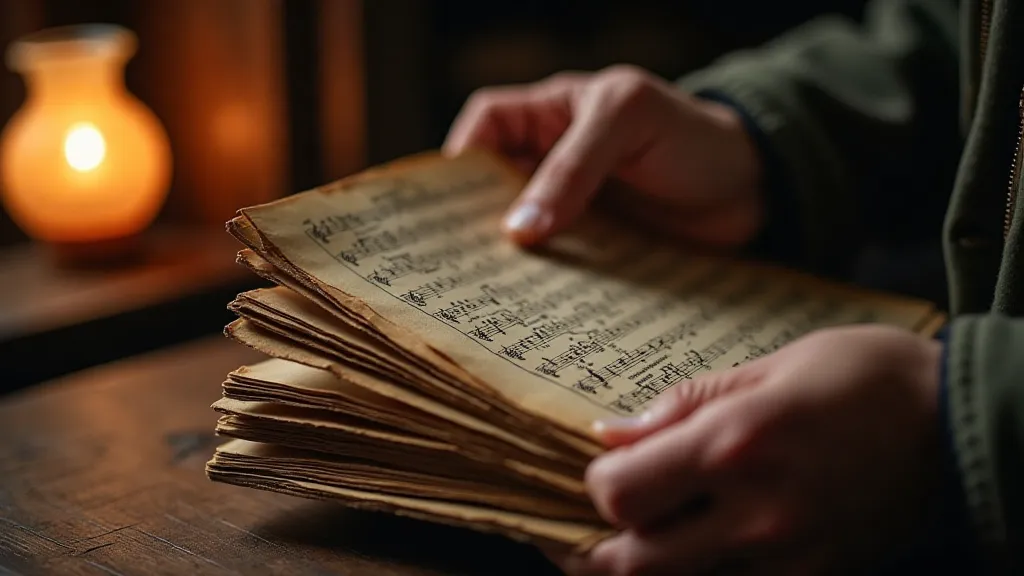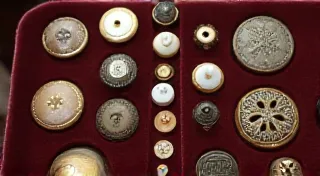The Metronome’s Quiet Witness: Tracking Tempo Shifts in Musical Eras
There's a peculiar beauty in holding vintage sheet music. It's not just the brittle paper, the faded ink, or the intricate illustrations that captivate. It’s the feeling of holding a tangible link to a bygone era, a silent testament to the musicians who poured their souls into those notes. And among the notations, often overlooked, lies a fascinating narrative – the changing perception and execution of tempo, chronicled by the humble metronome marking.
My own journey into collecting vintage sheet music began, as many do, with a curiosity about family history. My grandmother, a piano teacher for over sixty years, left behind a treasure trove of music, meticulously organized and lovingly preserved. Sifting through those stacks, I noticed a pattern. Early 19th-century pieces often lacked precise metronome markings, or listed them in a strangely vague manner. As I delved deeper, I began to understand that tempo wasn’t just about beats per minute; it was a cultural performance, shaped by evolving aesthetic ideals and the growing influence of scientific measurement. The very act of interpreting and adapting these notations gives a glimpse into the broader context of musical life – a world where the nuances of performance and the social setting were inextricably linked, as explored in detail in resources examining Shadows of the Salon: Sheet Music’s Role in 19th Century Social Gatherings.
The Early Days: Intuition and Artistic License
Before the widespread adoption of the metronome, established by Johann Nepomuk Mälzel in the early 1800s, tempo was largely dictated by a performer's intuition and the prevailing performance style. Composers might indicate tempo with descriptive terms like “Allegro moderato” or “Vivace,” leaving a significant amount of interpretation to the musician. These terms were deeply embedded in a shared cultural understanding of what constituted "Allegro" or "Vivace" within a particular musical context. The beauty of this era was the opportunity for nuanced expression, but it also led to considerable variation in performance. A "Vivace" in a Beethoven sonata might be significantly faster (or slower!) than a "Vivace" in a Schubert Impromptu.
Imagine a drawing-room performance from the late 1700s or early 1800s. The musicians weren’t striving for rigid adherence to a fixed tempo. They were engaging in a conversational interplay, responding to each other and the room itself. The listener wasn’t passively receiving the music; they were actively participating in the experience. The markings, the annotations – these weren’t just technical details; they were clues to a whole world of social ritual and personal expression – a world where sheet music became a key artifact of a vibrant social landscape. Delving into this broader context, one can gain a richer appreciation for the evolution of musical taste and its connection to societal shifts, as discussed further in articles focusing on Chromatic Cartography: Mapping Musical Taste Through Sheet Music Eras.

The Rise of the Metronome: Science Meets Art
The introduction of the metronome, while initially met with resistance from some Romantic composers who valued subjective expression, gradually revolutionized musical practice. It offered a seemingly objective way to standardize tempo, allowing for greater consistency across performances and facilitating collaboration between musicians. Beethoven, initially skeptical, eventually embraced the metronome, recognizing its potential to clarify his compositional intentions. However, even Beethoven’s use of metronome markings was often somewhat approximate, reflecting a lingering desire for artistic flexibility.
The shift wasn't immediate. For many years, musicians grappled with reconciling the new scientific precision with the ingrained traditions of expressive interpretation. Early metronome markings were often vague and inconsistent, reflecting this period of transition. A marking of "MM 100" might mean anything from 90 to 110 beats per minute, leaving considerable room for artistic discretion.
Romantic Era and the Pursuit of Emotional Depth
The Romantic era saw a complex relationship with tempo. While composers embraced the metronome, there was also a conscious desire to push the boundaries of tempo, to create a sense of breathless urgency or languid introspection. Robert Schumann, for example, frequently employed rubato – the subtle speeding up and slowing down of tempo – to enhance the emotional impact of his music. The metronome served as a framework, a guideline, but it was often deliberately bent to serve the composer’s expressive goals.
Think of a Chopin nocturne, full of yearning and delicate phrasing. The prescribed tempo provides a foundation, but the true magic lies in the performer’s ability to breathe life into the music, to allow the tempo to ebb and flow with the emotional current. It’s a dance between the composer’s intention and the performer’s artistry. The annotations left on these scores by previous owners and performers speak volumes about their interpretation of these complexities. The wear and tear, the marginalia – they are a record of countless performances and a testament to the enduring power of music. Considering the legacy of these artifacts allows us to appreciate the history, skill, and artistry of those who have engaged with them.
The desire for ever-increasing speed also became a factor. Pieces written in the mid-to-late 19th century frequently displayed faster tempos than earlier works, reflecting a cultural fascination with virtuosity and a desire to impress audiences. This isn’t necessarily about “better” performance; it’s about the changing aesthetic ideals of the time. The choices made in terms of tempo, dynamics, and phrasing all reflect a particular set of values and assumptions about what constitutes a successful performance. It’s a fascinating window into the cultural and social forces that shape our understanding of music.

The 20th Century and Beyond: A Return to Nuance?
The 20th century witnessed a gradual questioning of the rigid adherence to metronome markings. The rise of historical performance practice movements encouraged musicians to revisit early performance styles, often favoring a more flexible and expressive approach to tempo. The recording industry also played a role, allowing listeners to compare performances and develop their own preferences. This movement encouraged a re-examination of the very notion of what it means to "perform" music, prompting musicians to consider the historical context and the performer's role in shaping the listener's experience. It also fostered a renewed appreciation for the subtleties of tempo and expression, recognizing that the most compelling performances are often those that defy easy categorization.
Today, while metronome markings remain a valuable guide, there's a renewed appreciation for the artistry of tempo, for the subtle nuances that can elevate a performance from competent to truly captivating. The metronome remains a helpful tool, but it's no longer the sole arbiter of tempo. The legacy of these older methods of preservation, however, prompts us to consider how we maintain the integrity of these treasures for future generations – a challenge that demands careful consideration and a deep respect for the past.

Collecting Vintage Sheet Music: More Than Just Paper
For the collector, vintage sheet music offers a unique window into the past. It’s not just about acquiring a piece of paper; it’s about connecting with the musicians who played it, the audiences who listened, and the cultural context that shaped it. The condition of the music itself can be revealing. Heavily annotated scores indicate a performer’s active engagement with the piece. Dog-eared pages suggest a favorite passage. Even the quality of the printing and the style of the illustrations can offer insights into the period and the intended audience. The care taken in preserving these materials often reflects a deep sense of appreciation for their historical and cultural significance.
Restoration, if undertaken, should be done with the utmost care, respecting the integrity of the original document. Often, simply storing sheet music in a stable, acid-free environment is the best form of preservation. Handling the music with clean hands and avoiding exposure to direct sunlight are also crucial. The nuances of musical taste over time are fascinating to consider, and resources like Mapping Musical Taste Through Sheet Music Eras provide valuable context.
Conclusion
The metronome’s quiet witness continues to shape our understanding of music. The legacy of these treasures encourages continued exploration, and further investigation into resources like Shadows of the Salon: Sheet Music’s Role in 19th Century Social Gatherings allows for a richer appreciation of the era.





